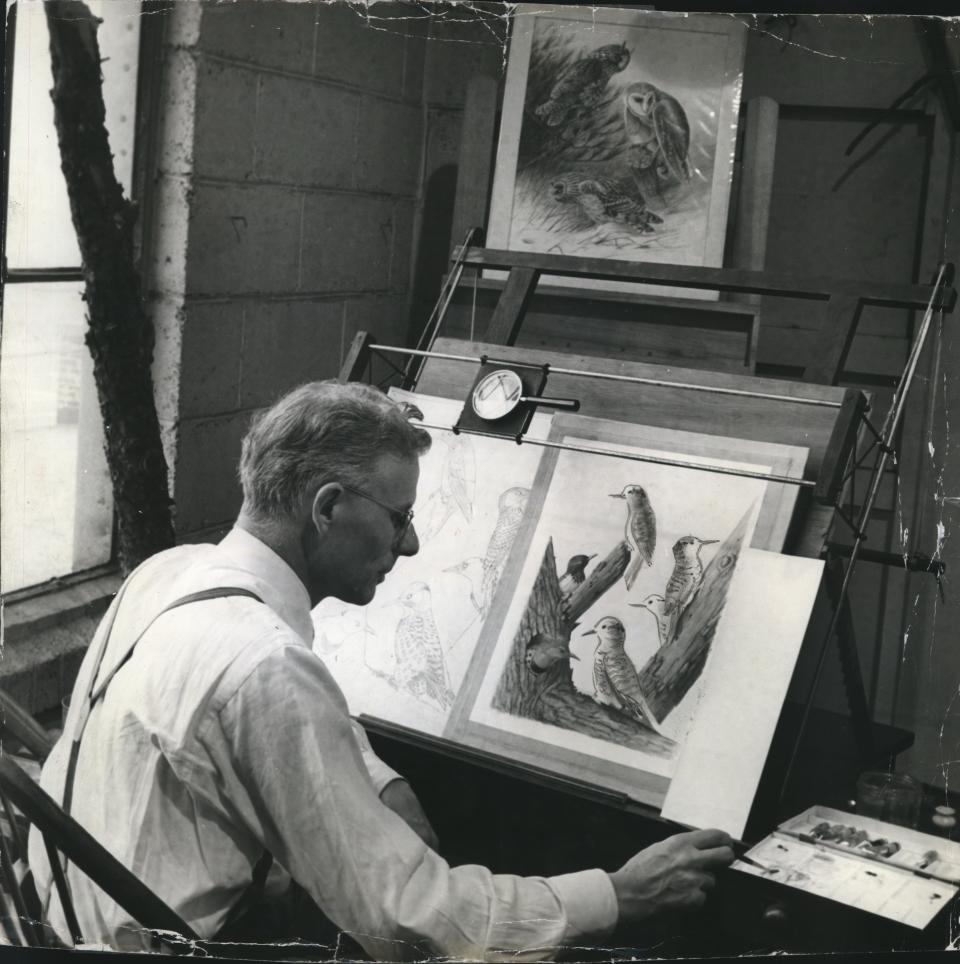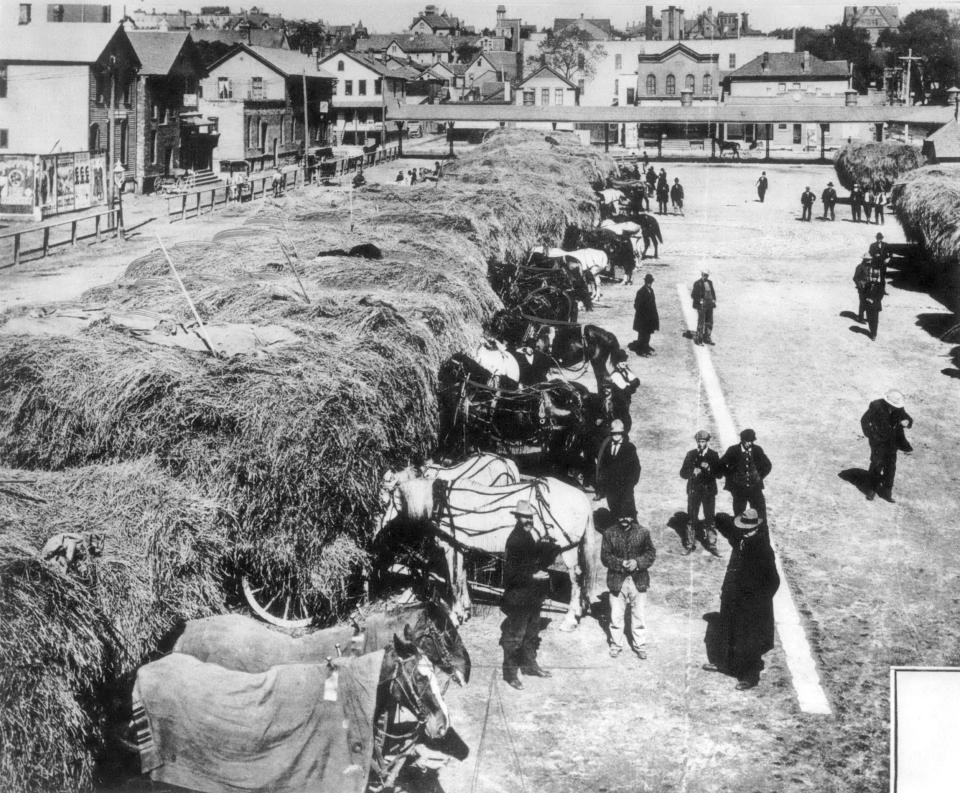The Milwaukee Public Museum is about to make its mark on one of the city's oldest neighborhoods
The signs are up and construction has started — or demolition, to be more accurate. “Welcome to the future home of Milwaukee Public Museum,” proclaim the banners on the fence around a razed commercial building on the northeast corner of 6th St. and McKinley Ave. The design of that future home, directly across from the Deer District, is far from settled, much less the content of its exhibits. There are millions of dollars to raise, and the grand opening won’t take place until at least 2026, but one of the city’s oldest institutions is poised to relocate to one of its oldest neighborhoods.
It won’t be the Public Museum’s first move. The Milwaukee mainstay has its roots in the German-English Academy, whose home still stands at 1020 N. Broadway. The highly regarded private school was founded in 1851 by Peter Engelmann, an immigrant educator who believed that students learned best by seeing and touching as well as reading and writing. Engelmann gathered an assortment of stones, bones, and other curiosities that would become the nucleus of MPM’s collections.
By 1882 there were so many objects to view that the museum incorporated as a department of the city and sought more spacious quarters of its own. The institution’s first official home was a corner of the Industrial Exposition Building, a crystal palace that stood on Sixth and Kilbourn. (The Miller High Life Theatre, formerly the Milwaukee Auditorium, now occupies the site.)
There, too, space eventually became a concern. In 1898 the Milwaukee Public Museum moved into the western half of the grand neoclassical building that fills the north side of Wisconsin Ave. between 8th and 9th streets. The Milwaukee Public Library moved into the eastern half, creating a sort of one-stop cultural center on Milwaukee’s main street.
The dual arrangement worked well for decades, but the Central Library grew faster than its neighbor, overflowing its own side and then building a 1957 addition that covered the north half of the block. The Public Museum developed its own growing pains and relieved them by building a new home literally across the street. MPM moved to 800 W. Wells, one collection at a time, between 1962 and 1967.
The professional staff grew more adept at storytelling with every move. The museum’s earliest exhibits were random to the point of chaos; a giraffe, a mountain goat, and a black bear might have been crammed into the same glass case like clothes in a closet. Staff member Carl Akeley advanced the state of the art significantly in 1890, when he unveiled the world’s first museum diorama, a virtuoso rendering of a muskrat lodge in three dimensions that graded seamlessly into a two-dimensional background. Habitat dioramas in the “Milwaukee style” soon became standard practice in museums around the world.
The move to Wells Street marked a bold new stage in MPM’s evolution. Natural history dioramas from every continent continued the established tradition, and a steady rollout of new exhibits — the European Village, a Costa Rican rain forest, a tyrannosaur chomping on an unfortunate triceratops, a full-dress Wisconsin powwow, the Butterfly Wing, the Streets of Old Milwaukee — kept audiences engaged and coming back for more. In its 60 years on Wells Street, MPM has made an indelible mark on generations of visitors from Milwaukee and far beyond.

The museum survived a near-death financial crisis in the early 2000s, but time has not slowed the deterioration of its building. Outdated climate control systems, leaking roofs, and shifting foundations have created problems severe enough to threaten the museum’s accreditation. Faced with massive repair bills or a chance to start over, MPM chose the second course.
As the Public Museum was evolving, so was its new neighborhood. In the mid-1800s, the blocks around 6th and McKinley developed as a residential choice just beyond the downtown commercial district. The area’s major landmark was our ancestors’ version of a gas station: a haymarket that sold fuel for Milwaukee’s horses. The open-air market covered the eastern half of the museum’s future block and became such a fixture that the surrounding neighborhood was known as simply the Haymarket.
More John Gurda: Researching Wisconsin, local history is easy once you know where to look
More John Gurda: I just turned 75. Do I feel irrelevant? Sometimes. But old age has its privileges.
Most of the area’s first residents were Germans, but the community was not entirely residential. In those pre-zoning days, the Haymarket was a hot mess of land uses. The Pabst and Schlitz breweries were the neighborhood’s bookends, and between them lay a hodgepodge of homes, churches, saloons, and small factories that made caskets, church furniture, barrels, boots, horse collars, ice cream, and a host of other products.
In the 1880s, as the Germans moved north and west to greener and more orderly pastures, the Haymarket became the home of Milwaukee’s newest ethnic group: eastern European Jews fleeing poverty and persecution in their homelands. By 1900 they dominated the area bordered by 3rd and 8th streets between Juneau and Walnut. There were nearly 5,000 people in those densely settled blocks — and 12 synagogues.
When the Jews, in turn, moved north and west, the Haymarket became a showcase of ethnic diversity. By the 1920s, in addition to holdover German and Jewish families, its residents included Greeks, Slovaks, Croatians, and African Americans, all with their own businesses and places of worship.

After being used for so long by so many groups, the Haymarket was eventually used up. In 1944 the brand-new Milwaukee Housing Authority made plans to clear the neighborhood’s most blighted blocks for a project that would house the war workers flocking to the city for jobs in defense plants. Political infighting delayed construction until World War II was over and the workers had all gone home. The project finally opened in 1948 as Hillside Terrace, a low-income housing development.
As Hillside Terrace expanded its footprint west of 6th street, there were large-scale changes in the eastern blocks. In the 1960s, urban renewal and road-building projects wiped out many of the Haymarket’s older buildings, and in the 1970s the central blocks became a sort of in-town business park, dotted with new commercial and light industrial buildings. The neighborhood was denatured and, with the exception of Hillside Terrace, depopulated, and there was worse to come. As the major breweries closed, Schlitz in 1982 and Pabst in 1996, the entire northwest corner of the central business district became a black hole, a place where few people wanted to visit, much less live or invest.
The turnaround since then has been astounding. In 2002 the lightly traveled Park East freeway spur was torn down, opening 26 prime acres for new construction. Four years later, real estate magnate Joseph Zilber bought the moldering Pabst Brewing complex and turned it into a sparkling mixed-use development. In 2018 came the main event: the $524 million Fiserv Forum sports arena. It became the centerpiece of the Deer District, the most transformative development of Milwaukee’s 21st century to date.
With impeccable timing, the Public Museum is tying its fortunes to the hottest district in Milwaukee and, in doing so, is raising the area’s temperature significantly. There is a synergy afoot that will benefit both sides, not to mention the people of Hillside Terrace. Public housing residents, for a change, will have one of the most enviable locations in town.
I don’t envy the staff members charged with the museum’s relocation. After 30-plus years in the same house, the very thought of moving overwhelms me. What to keep and what to toss? How much of our earlier lives is worth preserving, and how much is just dead weight? Those are questions every household has to answer when pulling up stakes, and they multiply exponentially for an institution with 170 years of history and over four million objects in its attic.
There are even more detailed questions being asked by loyal lifetime patrons, myself included. Will kids still be able to activate the rattlesnake in the bison hunt exhibit? Will that hilarious Claymation dinosaur video still play? Will the Streets of Old Milwaukee be transplanted with water pump and Granny intact? And will the butterflies flutter by to McKinley Ave.? Every successful museum straddles the border between tradition and novelty, between cherished standbys and new exhibits. Where will our museum find its place on that continuum? I suspect that the curators themselves are still wrestling with that question, but this much is certain: One of Milwaukee’s oldest new institutions will be a welcome addition to one of the city’s newest old neighborhoods.
John Gurda writes a column on local history (and occasionally his own) for the Ideas Lab on the first Sunday of every month. Email: mail@johngurda.com
Our subscribers make this reporting possible. Please consider supporting local journalism by subscribing to the Journal Sentinel at jsonline.com/deal.
DOWNLOAD THE APP: Get the latest news, sports and more
This article originally appeared on Milwaukee Journal Sentinel: Milwaukee Public Museum is moving to one of our oldest neighborhoods

